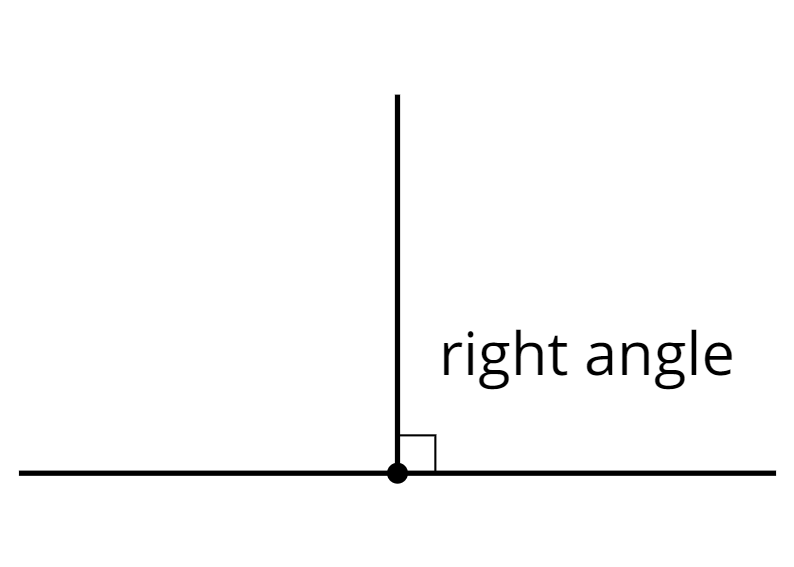Lesson 13
Congruence
Let’s find ways to test congruence of interesting figures.
13.1: Not Just the Vertices
Trapezoids \(ABCD\) and \(A’B’C’D’\) are congruent.
- Draw and label the points on \(A’B’C’D’\) that correspond to \(E\) and \(F\).
- Draw and label the points on \(ABCD\) that correspond to \(G’\) and \(H’\).
- Draw and label at least three more pairs of corresponding points.

13.2: Congruent Ovals
Are any of the ovals congruent to one another? Explain how you know.
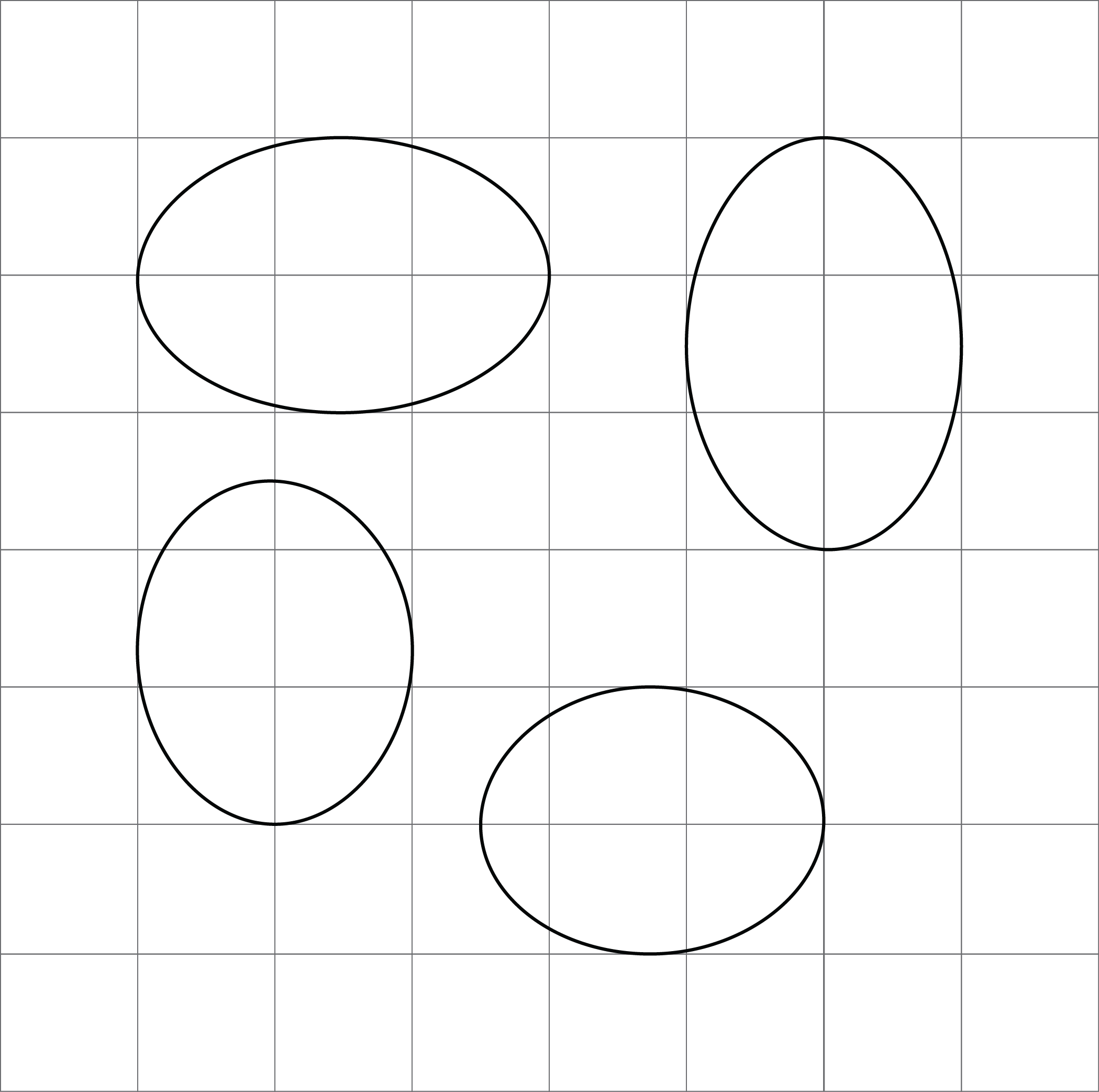
You can use 12 toothpicks to create a polygon with an area of five square toothpicks, like this:
Can you use exactly 12 toothpicks to create a polygon with an area of four square toothpicks?
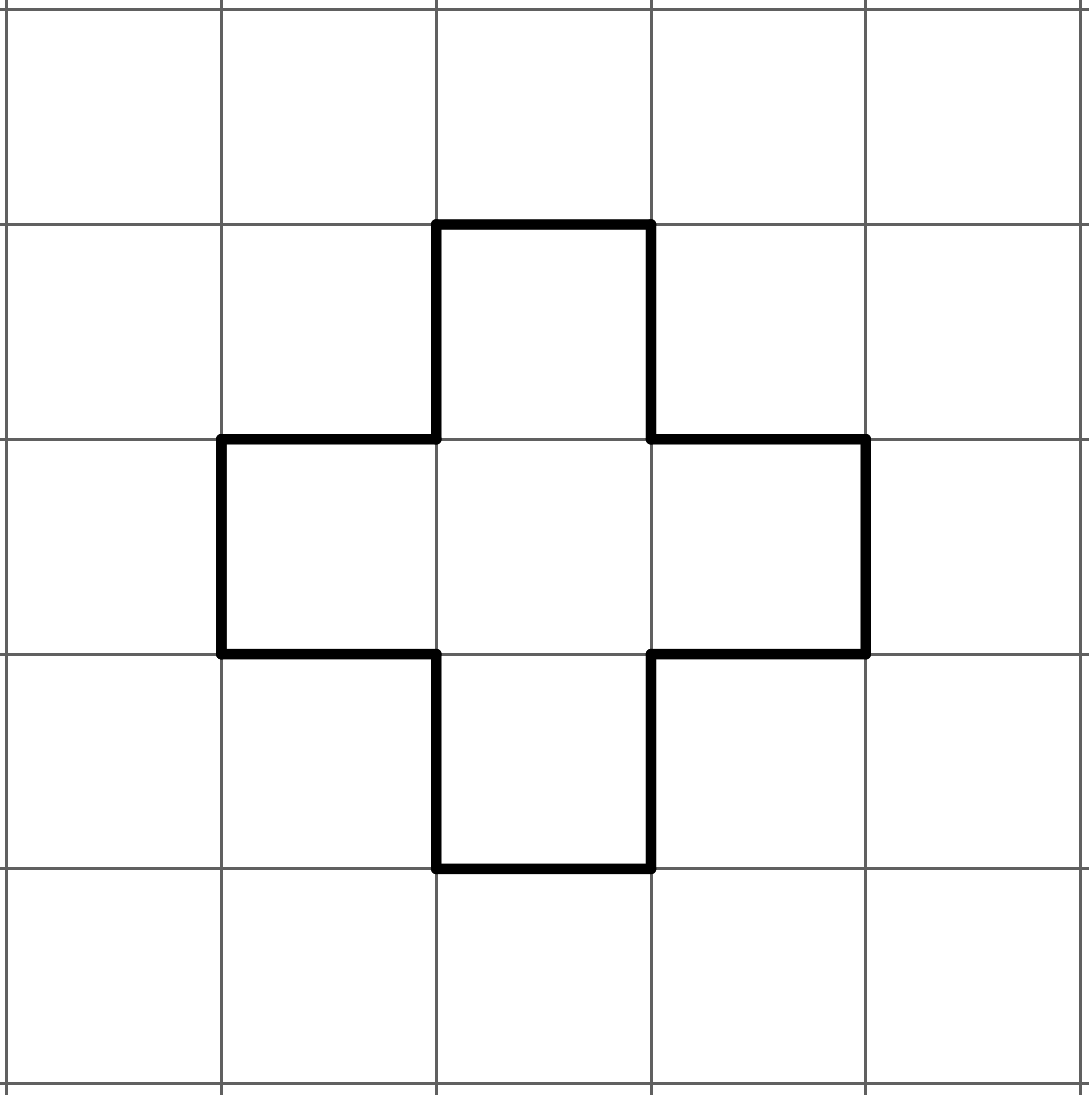
13.3: Corresponding Points in Congruent Figures
Here are two congruent shapes with some corresponding points labeled.

-
Draw the points corresponding to \(B\), \(D\), and \(E\), and label them \(B’\), \(D’\), and \(E’\).
-
Draw line segments \(AD\) and \(A’D’\) and measure them. Do the same for segments \(BC\) and \(B’C’\) and for segments \(AE\) and \(A’E’\). What do you notice?
-
Do you think there could be a pair of corresponding segments with different lengths? Explain.
13.4: Astonished Faces
Are these faces congruent? Explain your reasoning.
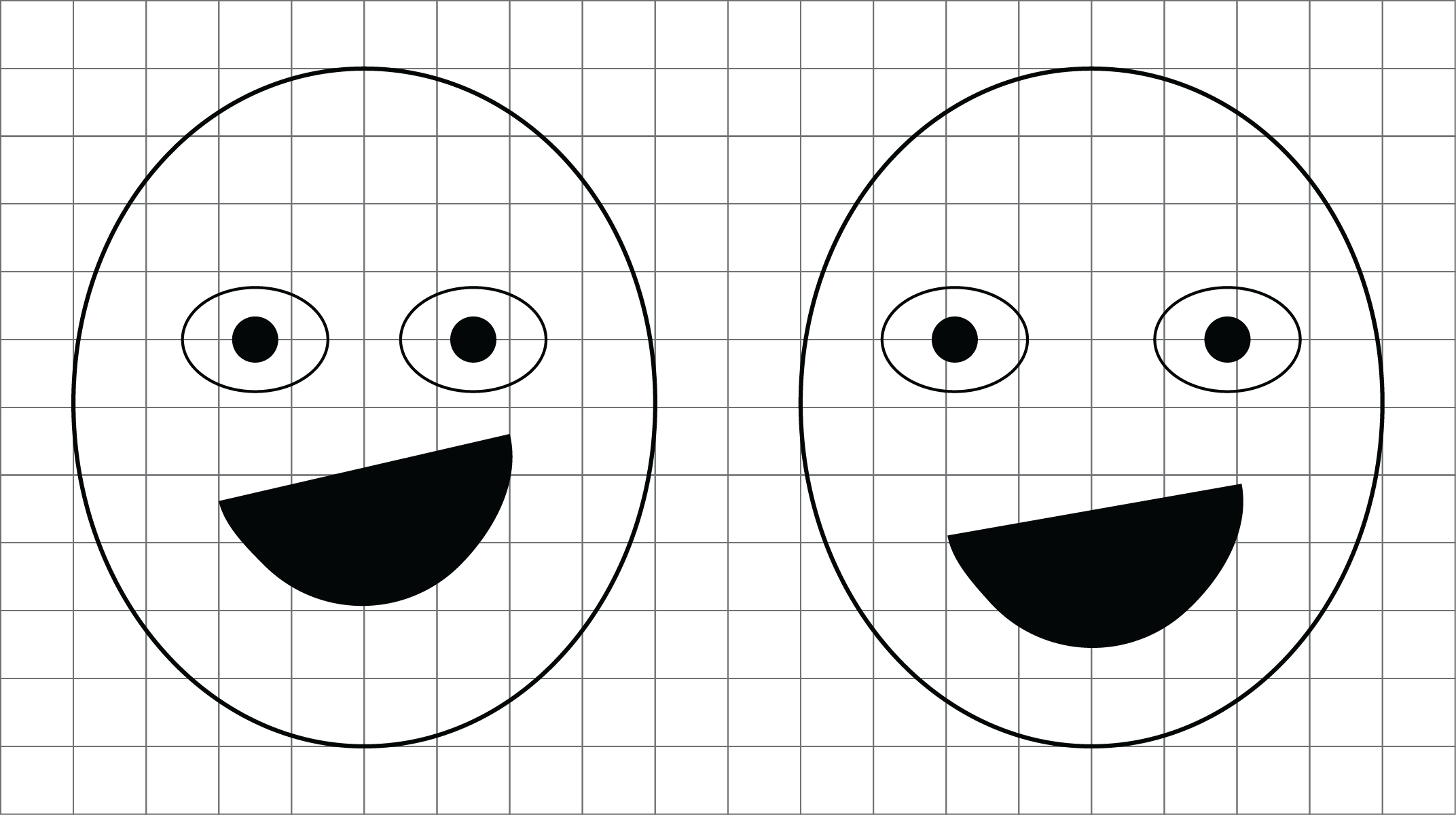
Summary
To show two figures are congruent, you align one with the other by a sequence of rigid transformations. This is true even for figures with curved sides. Distances between corresponding points on congruent figures are always equal, even for curved shapes. For example, corresponding segments \(AB\) and \(A'B'\) on these congruent ovals have the same length:

To show two figures are not congruent, you can find parts of the figures that should correspond but that have different measurements.
For example, these two ovals don’t look congruent.
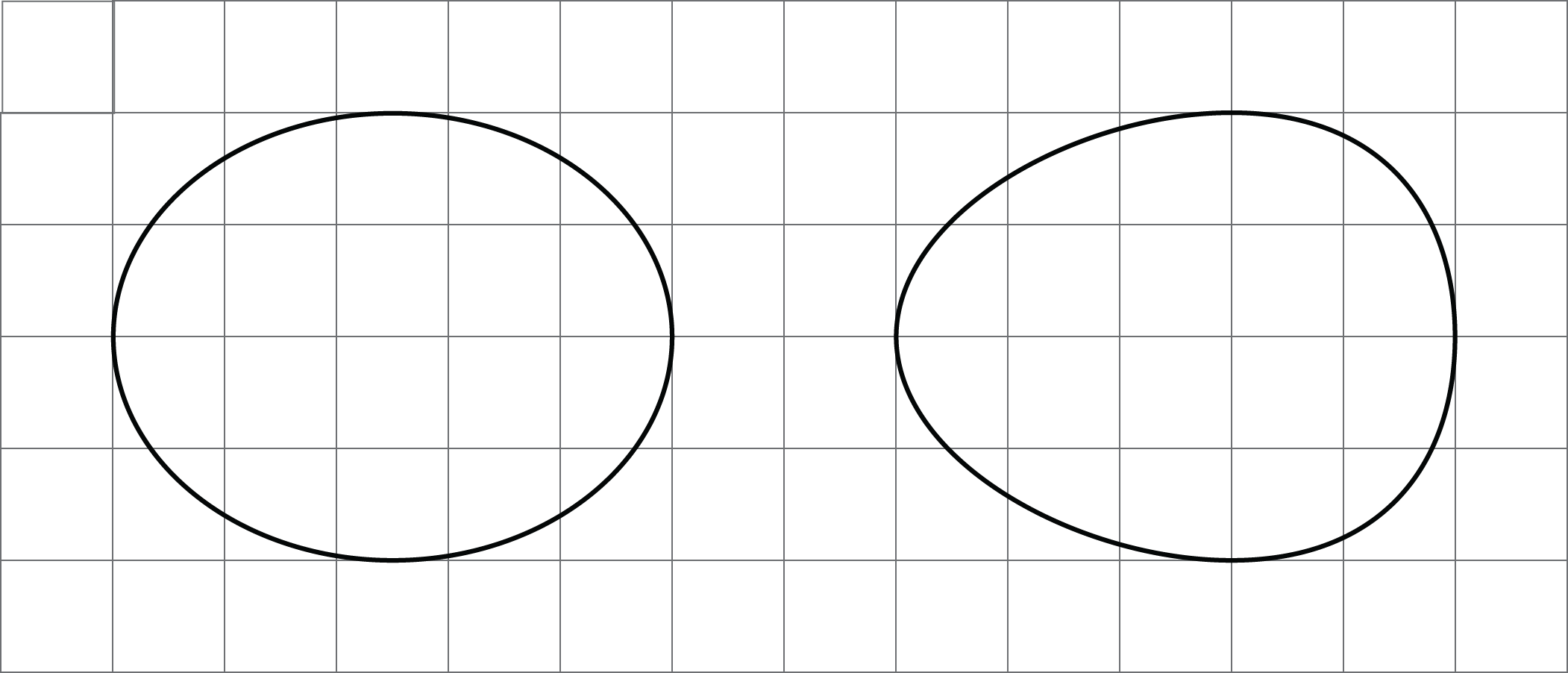
On both, the longest distance is 5 units across, and the longest distance from top to bottom is 4 units. The line segment from the highest to lowest point is in the middle of the left oval, but in the right oval, it’s 2 units from the right end and 3 units from the left end. This proves they are not congruent.
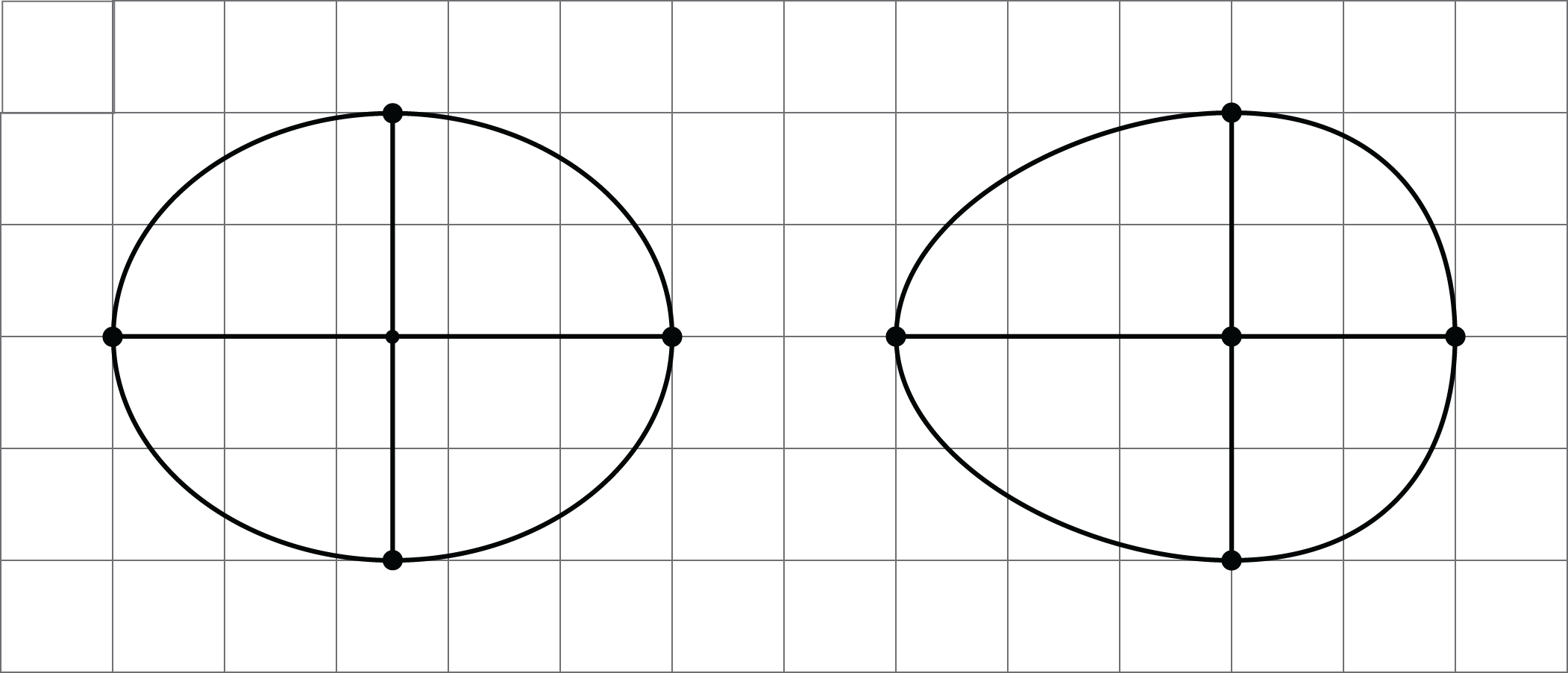
Video Summary
Glossary Entries
- congruent
One figure is congruent to another if it can be moved with translations, rotations, and reflections to fit exactly over the other.
In the figure, Triangle A is congruent to Triangles B, C, and D. A translation takes Triangle A to Triangle B, a rotation takes Triangle B to Triangle C, and a reflection takes Triangle C to Triangle D.
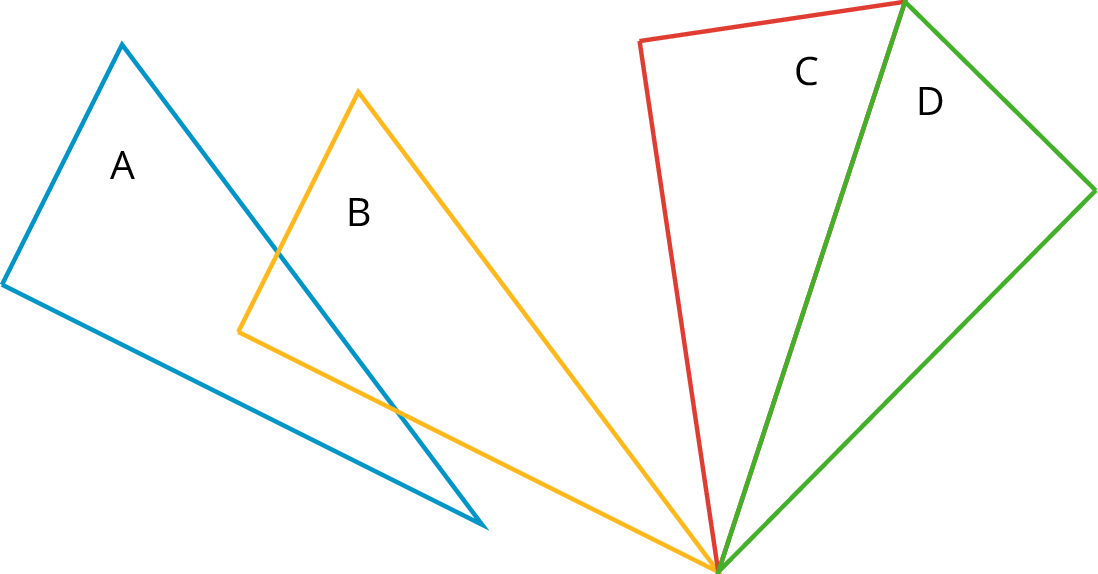
- right angle
A right angle is half of a straight angle. It measures 90 degrees.
